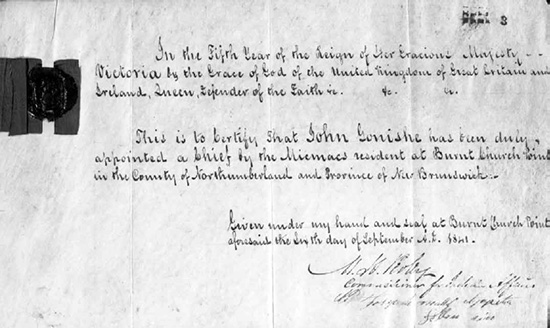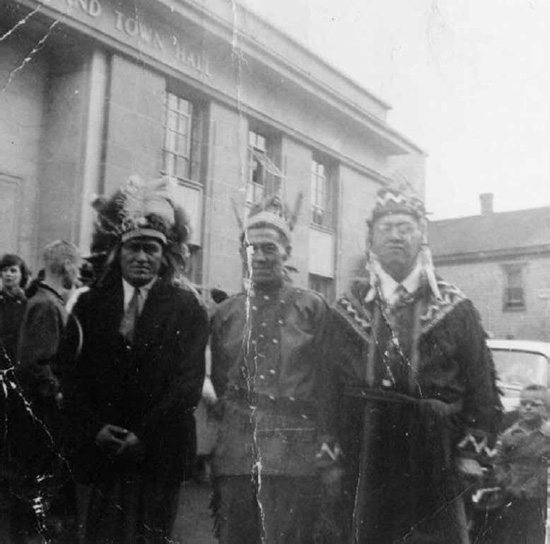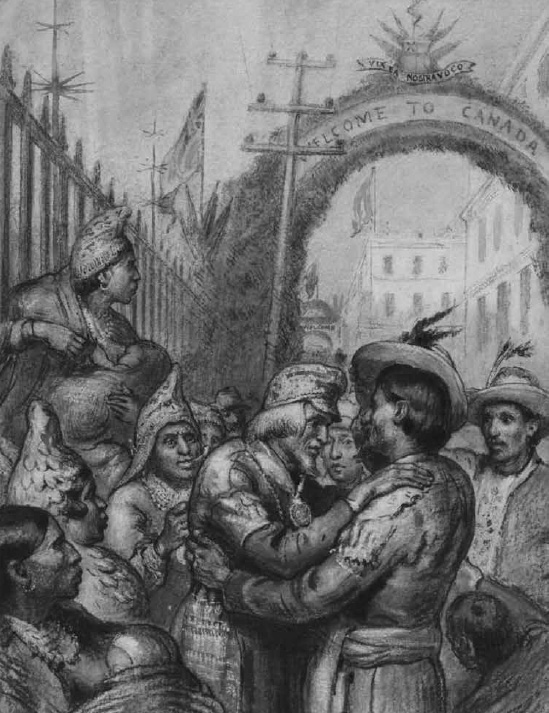Tell the following story to the class:
About the last of March or the first of April one winter, the Indians had very few provisions – there was no game or fish. A big storm came. Peter Ginnish’s grandfather heard a crow flying toward him. It came close to him, then cawed and cawed. He noticed it appeared to be greasy and was wiping and cleaning its bill on its feathers. It cawed and cawed, then flew off to one end of Portage Island. He told his father about the crow. They went out with another man, put on their snowshoes, and crossed on the ice to the island. Something had come ashore. When they arrived at the place, they found it to be something large, like a ship, and black. It was a big whale. They found a big whale! There was seven inches of fat in addition to the meaty part. The men returned each with a big load. Next morning, a man went on snowshoes to Richibucto, one to Red Bank, one to Shippagan, and even to Bathurst and Restigouche, to take the news. From all these settlements, the Indians came and hauled away pieces of the whale-every piece of it. They left only the bones. The Indians are never stingy. They are like a crow. It is never stingy. When a crow finds provisions, it brings the news to the Indians. It came to tell the people at Burnt Church about the whale it had found at Portage Island.
– Peter Ginnish to Wilson Wallis 1911
Using this story, have students discuss what it is saying. Did the crow make an agreement with Peter Ginnish’s grandfather? What was it? Did the men who found the whale make another agreement? What was it?
Discuss that people came from many areas to share the food from the whale. Nobody claimed the whale as theirs and it was distributed evenly.
Have you ever had a sharing experience with your own family? What did you agree to do? Record your response on chart paper. Sign it.
Do you know of situations where things are shared today with large groups of people – going on a Terry Fox run, Hallowe’en, borrowing a book from the library? Write down what you agreed to do and then sign it.
In the original story, when an event like this happened there was a ceremony following that expressed the value of sharing. What could have happened in these communities to celebrate all this food? What happens in your families when something is shared by the whole family?
If possible, invite a local Indigenous Elder to speak about the meaning and value of sharing (e.g., what you give, you receive; showing kindness; showing respect; giving of the self; giving what is most valued; expressing gratitude) and its expression in Indigenous ceremonies. If not, invite someone in from a food bank or shelter or an association that welcomes in newcomers to talk about the same things.
Before the interview have a class discussion on how to show respect to a guest (parent, Elder, speaker). Record these new ideas on chart paper or on the SMART Board.
Is this a promise, a treaty or an agreement? Between who?

Read the certificate’s text
Certificate of appointment of as Chief, by Mi’kmaq residents of Burnt Church Point, Northumberland County, New Brunswick, 6 September 1841
In the Fifth Year of the Reign of Her Gracious Majesty Victoria by the Grace of God the United Kingdom of Great Britain and Ireland, Queen, Defender of the Faith
This is to certify that John Gonishe has been duly appointed a Chief by the Micmacs resident at Burnt Church Point in the County of Northumberland and Province of New Brunswick.
Given under my hand and seal at Burnt Church Point aforesaid the Sixth day of September 1841
M.H. Perley
Commissioner for Indian Affairs

Who was Lord Beaverbrook? What does his name tell you? Why are these Chiefs dressed in this manner? How are they showing respect? Notice that the names of these communities have changed since this photo was taken. What are these communities’ names now?

Look at the two pictures above on the SMART board. Who are these people and who do they represent? Why are they dressed up? Has an agreement been reached?




